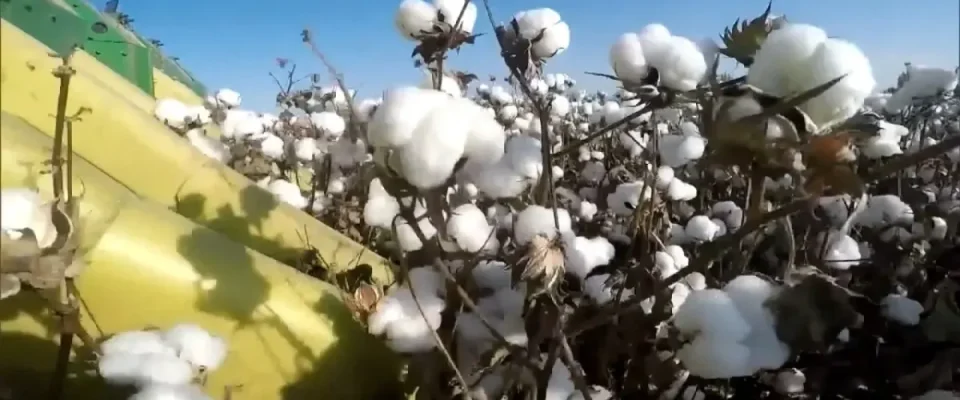China has unveiled the world’s first laser topping robot, overcoming a major hurdle in cotton’s laborious cultivation cycle to achieve the quest for fully mechanised cotton production, according to its developer.
Cotton topping involves removing the plant’s top bud to redirect nutrients towards lateral branches, boosting boll formation and yield – a process that has long been plagued by inefficiency, inaccuracy and crop damage. The laser topping robot was jointly developed by Xinjiang University and EAVision Robotic Technologies, a company that exports its agricultural drone products to various countries, including Japan, Turkey, Brazil, Indonesia and Thailand.
The robot, which made its debut in the city of Changji in the autonomous region of Xinjiang, is in the pilot test phase, with commercial availability expected to be still some years away. It resembles a mobile canopy and uses advanced solid-state lidar – or light detection and ranging – and machine vision systems to identify the terminal cotton bud and vaporise it with a burst of heat delivered by a high-powered blue laser – all without touching the plant.
Because the plants are different heights and also sway in the wind, Xinjiang University’s Zhou Jianping, who led the development team, described the operation as “like hitting a moving target with a moving gun”. “The robot achieves 98.9 per cent accuracy in bud detection, with under 3 per cent plant damage, and over 82 per cent topping success,” he told the official Xinjiang Daily newspaper. “Operating at 6-8 mu [or 0.4-0.53 hectares] per hour, it’s 10 times faster than manual labour, yet its performance still has much room to improve with future upgrades,” he said, according to an article that appeared in the newspaper on Wednesday. The robot was the result of three years of research, with the team integrating sensor technology, machine vision, and laser control to tailor the device to Xinjiang’s dense farming pattern, ensuring stability in dynamic environments, the article said.
Compared to mechanical or chemical topping, lasers minimise plant stress, eliminate herbicide use, and allow round-the-clock operation,” Zhou said. Xinjiang is China’s largest cotton production base, with an output of 5.686 million tonnes last year – an increase of 574,000 tonnes on 2023, according to data from the National Bureau of Statistics. According to Pei Xinmin from Xinjiang Agricultural University, cotton topping is the last hurdle in achieving fully mechanised cotton production. “The successful development and application of this laser topping robot signifies that China’s cotton production is about to achieve true full mechanisation,” Pei told Xinjiang Daily. “This is a prime example of artificial intelligence empowering smart farming. It not only promotes the upgrading of Xinjiang’s cotton industry, but also provides replicable and scalable technological models for global agriculture.”
News Courtesy : South China Morning Post.

